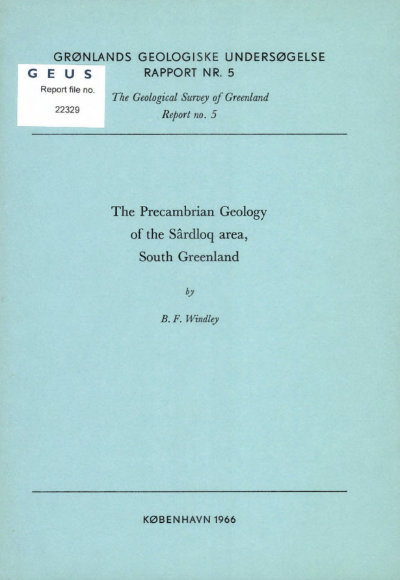The Precambrian geology of the Sârdloq area, South Greenland
DOI:
https://doi.org/10.34194/rapggu.v5.7130Abstract
The geology of the Sârdloq area is divided on a chronological basis into two plutonic periods, preceded, separated and followed by periods af basic dyke intrusion. During the Ketilidian plutonic period, veined, banded and homogeneaus gneisses were formed, which were deformed in three periods af folding. The gneisses contain relicts of earlier, 1st period basic dykes. F 1 folds are relicts within the regional gneiss foliation (SI); F 2 folds forrned under syn-migmatitic conditions, giving rise to a major synform the axis af which plunges shallowly NE or SW and F 3 folds are represented by a post-migmatisation buckling af the foliation an axes trending NW–SE but with variable plunge. Ultrabasic and basic intrusions are probably related to the 2nd period basic dykes intruded in the Kuanitic cratogenic period. During the Sanerutian plutonic period the earlier gneisses were reactivated to form a new, more homogeneaus granite, in which the Kuanitic basic dykes are preserved as undisturbed relicts. The intrusion of a swarm af basic dykes under late-plutonic conditions (3rd period) was followed by the intrusion af net-veined diorite sheets, emplacement af homogeneaus microgranite bodies and tectonic emplacement af layered ultrabasic bodies. The formation af abundant dilatational pegmatites and layered aplite-pegmatites followed by a minor phase af basic dyking ended the second plutonic period. During the Gardar period NE-SW and E-W trending dolerite dykes were intruded and followed by faulting and mylonitisation. A swarm af NW-SE trending dolerite dykes was intruded in post-Gardar time.
Downloads
Published
Issue
Section
License
This article is distributed under a CC-BY 4.0 licence, permitting free redistribution and reproduction for any purpose, even commercial, provided proper citation of the original work. Author(s) retain copyright over the article contents.


